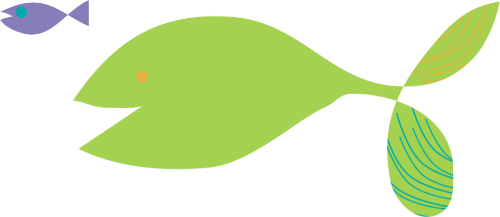|
The world we now inhabit is like nothing we have known before. So different are the challenges of today from the world our schooling prepared us for we are all strangers in a strange land.

Pilot fish
A troubling gap has opened up between the demands placed on us and the mental capacities most of us have to deal with them. Research in the workplace suggests that 60% of positions now require a range of intelligences that fewer than 30% of the population possess. Even the best educated are in over their heads. We are entering a new and uncharted land – some of us as intentional immigrants, most of us as refugees.
The only natives in this new world are the young. For them in particular we have a responsibility, having gained an inkling of the direction we are heading, to redesign our schooling and other cultural processes to cultivate the psychological capacities, knowledge and modes of action that will be at home in this new world.
How? By recognising that the needs of the economy, the needs of society and the needs of the individual are converging. In all three spheres the challenge is the same: to grow whole people, people able to take effective action and make meaning from their lives.
We will also need to address the casualties of this cultural shift – and there will be many. California Senator John Vasconcellos says we must become hospice workers for the dying culture and midwives for the new.
We have done this before at the dawn of the industrial age when thinking in philosophy, science and the arts was translated into curriculum, social policy and community organisation. Will we show the courage to do so again - this time on a global scale?
|

Comments for "Design for transition to a new world"
>> add your comment below
There are no comments yet.
Comment Form
Please add your thoughts